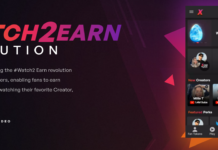The Blockchain and Bitcoin Conference Prague 2017 took place on May 17, with attendees hearing from speakers on topics ranging from investing, mining, and regulation. The conference was held next to Vienna House in a hotel in the Andel district of the Czech capital. The area hosts a shopping centre with a bitcoin ATM and is across the river Vltava from the ‘old city.’
Here we detail some of the highlights from the event.
One of the most interesting speakers was WAVES CEO and Founder Sasha Ivanov. The altcoin has been making rapid progress, recently entering into the top ten cryptocurrencies by market capitalization according to CoinMarketCap and pushing into the top 20 on CoinGecko.
WAVES is an open blockchain platform, while Bitcoin is for money transfer it is not meant to store arbitrary data. Ivanov said that Ethereum is a great low-level approach, but has scalability issues. He says yes it is cool, flexible, but there are not too many production systems built on Ethereum at this stage.
Ivanov goes onto say that we don’t have any open blockchains that are production ready. Permissioned systems are more stable but they are not a blockchain. He says said that while what some banks were doing is cool, it is some sort of middle ground between the legacy system and blockchain technology. Ivanov stated that within ten years we should have production-ready solutions for open blockchains.
The WAVES founder also hinted at the next big thing in cryptocurrency; authenticated data structures. While most people point to storage of the blockchain as a major problem for adoption, a lesser known problem is that of state storage. To overcome these setbacks, WAVES will use authenticated data structures which are “going to be big in crypto” Ivanov reckons.
Using Bitcoin NG and Proof of Stake, it will allow up to 200 transactions per second on the network. By building upon what exists in bitcoin, there will be no need to pay for the execution of code as with Ethereum. While it will not be as flexible as Ethereum, Ivanov stated that it could potentially cover up to 90 percent of Ethereum use cases and could add monero-like ring signatures.
Ivanov closed his presentation focusing on open-source collaboration:
“Waves, Ethereum, Bitshares – we should work together to make blockchain secure and useable within five years.”
Sasha Ivanov also explained WAVES’ Decentralized Exchange (DEX), illustrated below, but is not fully decentralized; with a centralized server combined trades on the blockchain, the DEX combines speed of execution and security. When asked on the ambitions for the DEX, IVanov responded by saying that it will become one of the top ten exchanges by volume. He revealed that the team are working on USD and CNY integration, as well as obtaining a finance/payments license to become a payment gateway.
Rodrigo Balam, Genesis Mining Representative, spoke about opportunities in cryptocurrency mining. Balam highlighted that only 15 percent of Ether remaining to mine and 25 percent of bitcoin left to mine, making the mining industry a very competitive space. However, he talked about investment opportunities in a regulated mining fund, the LogosFund, which is the world’s first bitcoin mining fund regulated by the SEC and Germany’s BaFin. Aimed at investors with 50,000 to 100,000 euros ($56,250 – $112,500), Balam said investors with more capital should consider setting up their own mining operation.
When asked on his thought on mining centralization Balam responded:
“It is important to get different parties involved, involve governments. By summer 2017, 350,000 retailers, including Uni Qlo will accept bitcoin at retail points in Japan. Governments will help decrease centralization and public policy will help.”
Kamil Brejcha, Head of Operations and Co-founder Bitchain spoke on banks and blockchain technology, outlining seven things the banking sector should do before implementing this new technology. Brejcha stated that banks make a big mistake, where they skip learning about bitcoin. Instead, financial services have seized on ‘the blockchain,’ and are incorporating some elements of bitcoin in hope of not being disrupted.
Here are his seven recommendations for banks working on blockchain technology:
- Educate everyone on bitcoin and blockchain – few financial people understand this, fix this first. Brejcha says he has met many venture capitalists, corporates, and government types who still do not understand bitcoin and the blockchain.
- Monitor development of major cryptocurrencies – insights to improve strategic decision making.
- Onboard a bitcoin/blockchain executive or entrepreneur.
- Integrate with an exchange/wallet.
- Stimulate Bitcoin/Blockchain development, connect with industry experts.
- Create a service for cryptocurrencies, like ShapeShift, get direct feedback from customers.
- Innovate outside of your regulatory framework, inside of it you will not keep up with open alternatives.
Another highlight of the event was the presentation from Bitup CEO Kir Kelevra, ‘Fear and Loathing in Crypto-trading.’ In his talk, Kelevra drew upon his experience as a cryptotrader and shared with the audience how to identify successful and profitable ICOs. The first rule; know your assets. There are numerous types of ICO tokens, but can be categorized broadly into five main types; in-platform tokens, token as a stock, credit token, commodities, and hybrid models.
Then Kelevra turned to fundamental analysis, which is a common method used to trade currencies and other financial instruments. However, with crypto-assets, we look at different things. For instance, fundamental analysis involves assessing business needs that the ICO is trying to solve, the availability of escrow and rounds of funding, a transparent legal model, professionalism of the team and the roadmap and strategy.
Emphasizing the background of the team as one of teh most important criteria for investing in an ICO, Kelevra also pointed to the scope of the project and urged investors to use common sense and consider feasibility of new projects. Pointing to the most successful ICOs of 2014-2017 such as WAVES, Bitshares, Storj, and Augur, there is a lot of opportunity for growth in value for ICO tokens, but concluded with a comment from Toly Kaplan of ForkLog:
“This is the worst and at the same period the best time to enter the market.”
The Blockchain and Bitcoin Conference 2017 will continue its series of events in St. Petersburg, Russia on June 22 and Stockholm, Sweden on September 7. You can find out more about the events here.

Btcmanager.com is author of this content, TheBitcoinNews.com is is not responsible for the content of external sites.
Our Social Networks: Facebook Instagram Pinterest Reddit Telegram Twitter Youtube











